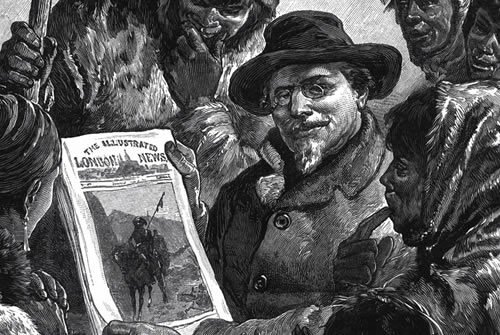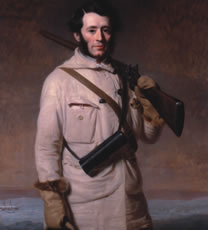MEDIA COVERAGE
Radio 1's Morning Ireland
Dundalk devotes exhibition to Arctic Fox
RTE's Nationwide
Exhibition on Dundalk polar explorer
About the Arctic
Arctic Inhabitants
The term Eskimo has historically been used to denote the aboriginal people who inhabit the North Polar Region excluding the Arctic parts of Scandinavia and Russia. This group can be divided into two main sets of people: the Inuit, who inhabit northern Alaska, Canada and Greenland, and the Yupik, who are associated with western Alaska, south central Alaska and the Russian Far East. Today amongst the Inuit people the phrase Eskimo is considered to be degrading primarily because it originated with non-Inuit and is widely believed to mean ‘eater of raw flesh’.
Inuits are believed to have arrived in Alaska around the year 1000 AD spreading eastward across the Arctic. By 1300, they had settled in Greenland.

Traditionally they were hunters and fishermen – with seals, polar bears, caribou, birds, whales and walruses amongst their main prey. The division of labour was based on gender with men assuming the role of hunters and fishermen whilst women cared for children, cleaned huts, sewed and cooked. Inuit culture has a strong sense of community where several families share a place when wintering. Goods were shared within a household and to a lesser extent within a whole community during the winter.
Marriages were often arranged, with men expected to marry as soon as they were able to hunt, women when they reached the age of puberty.
The arrival of European explorers brought great changes to the Inuit way of life through the introduction of disease. However those based in the higher latitudes were not as affected, as the land they occupied held little interest for the new settlers.


